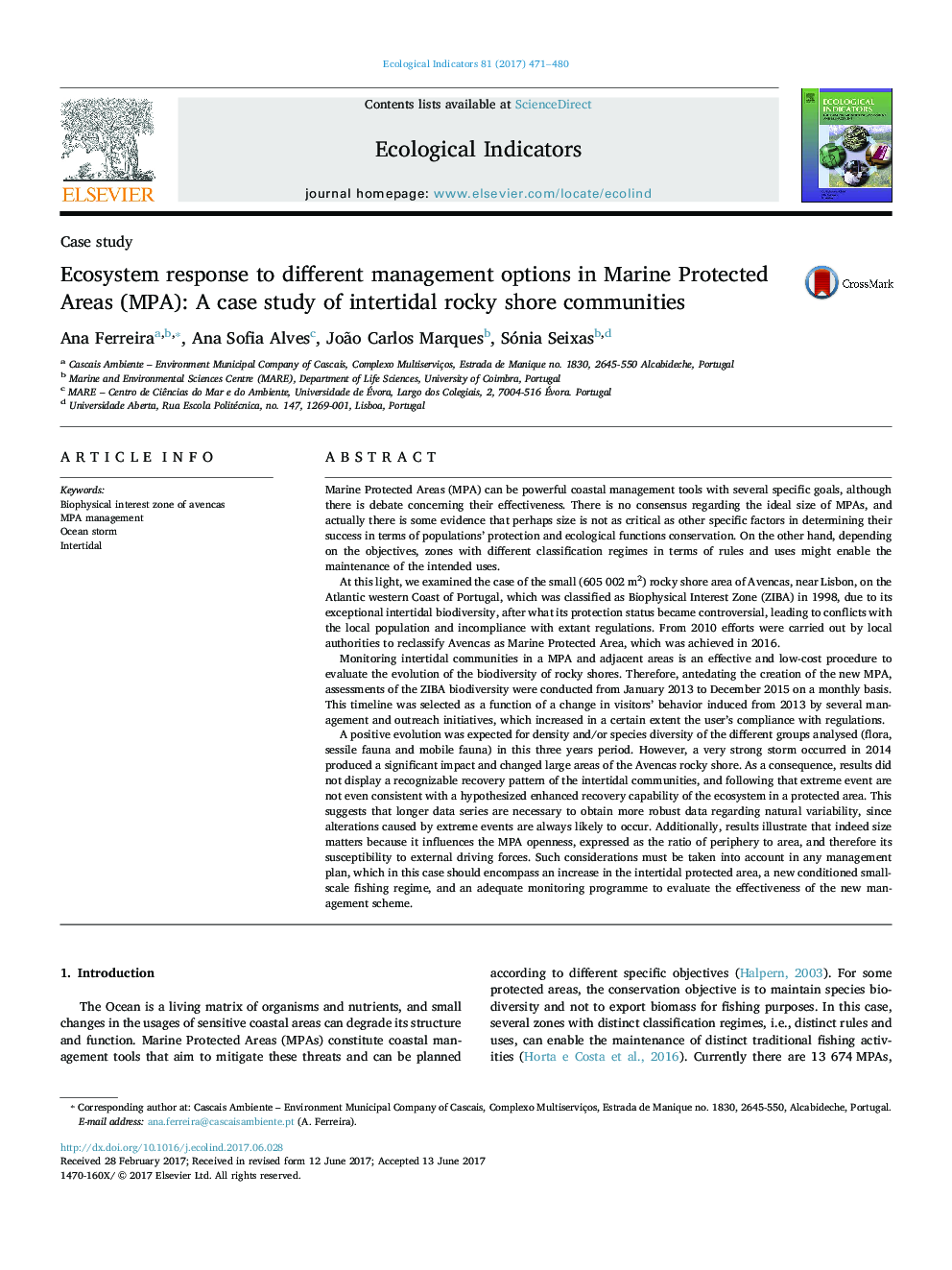| Article ID | Journal | Published Year | Pages | File Type |
|---|---|---|---|---|
| 5741450 | Ecological Indicators | 2017 | 10 Pages |
Abstract
A positive evolution was expected for density and/or species diversity of the different groups analysed (flora, sessile fauna and mobile fauna) in this three years period. However, a very strong storm occurred in 2014 produced a significant impact and changed large areas of the Avencas rocky shore. As a consequence, results did not display a recognizable recovery pattern of the intertidal communities, and following that extreme event are not even consistent with a hypothesized enhanced recovery capability of the ecosystem in a protected area. This suggests that longer data series are necessary to obtain more robust data regarding natural variability, since alterations caused by extreme events are always likely to occur. Additionally, results illustrate that indeed size matters because it influences the MPA openness, expressed as the ratio of periphery to area, and therefore its susceptibility to external driving forces. Such considerations must be taken into account in any management plan, which in this case should encompass an increase in the intertidal protected area, a new conditioned small-scale fishing regime, and an adequate monitoring programme to evaluate the effectiveness of the new management scheme.
Keywords
Related Topics
Life Sciences
Agricultural and Biological Sciences
Ecology, Evolution, Behavior and Systematics
Authors
Ana Ferreira, Ana Sofia Alves, João Carlos Marques, Sónia Seixas,
